by Naomi L. | July 1, 2015 | Blog, Creative Writing |
Grammar is a beautiful thing, isn’t it? If you agree, then you too may be a grammar nerd! We grammar enthusiasts come in all shapes and sizes, and there are millions of us scattered all over the world. But have you ever wondered what sort of people make up most of the grammar nerd population?
If you have, then you’re in luck! To celebrate a milestone of 5 million Facebook fans, Grammarly has released an infographic breaking down the major percentages of their grammar-loving audience. See where you fit in the wide world of grammar nerds! Enjoy!

My Grammar Nerd Anatomy
- Woman
- College-educated
- 25 years old (so close!)
- In a relationship
- Scientist (but I conduct my research at a university, so I guess that counts as Education)
- Living in South America, though I was raised in the United States
- “Irregardless” is not a word! Let’s get it right, people.
- I love books, I love words, and the Oxford comma has really been growing on me lately.
- Semi-colons are awesome; that’s just a fact.
Feel free to share your profile in the comments! Have fun!
Today’s creative writing post is brought to you by Grammarly, the World’s Best Grammar Checker. For more information on Grammarly, visit http://www.grammarly.com/grammar-check. Thanks for reading! Happy writing!
by Naomi L. | June 24, 2015 | Blog, Creative Writing |
When it comes to creative writing, there are plenty of sources of inspiration out there. Several of them have been featured here on my blog, from books to music to video games. But one particularly beautiful source of inspiration that I have yet to discuss is visual art.
So today, I’d like to explore the inspiration that visual works of art can provide for creative writing. How can art composed of images become fruit for art composed of words? Enjoy!
Worth a Thousand Ideas
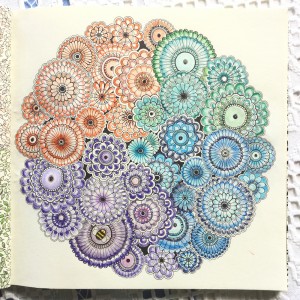 Visual art is arguably the “most universal” art medium. It comes in many forms: drawings, paintings, photography, sculptures, etc. They can come in a vast array of colors or a monochromatic spectrum from black to white. They can be amateur pieces created for fun or professional-quality works on display in the finest galleries in the world. But one thing they all have in common is that they were each born from an idea. If you think about it, doesn’t that make them a sort of “writing with images”?
Visual art is arguably the “most universal” art medium. It comes in many forms: drawings, paintings, photography, sculptures, etc. They can come in a vast array of colors or a monochromatic spectrum from black to white. They can be amateur pieces created for fun or professional-quality works on display in the finest galleries in the world. But one thing they all have in common is that they were each born from an idea. If you think about it, doesn’t that make them a sort of “writing with images”?
Similar to creative writing, a work of visual art can start as one idea that grows into a whole network of connected thoughts, stories, possibilities, all waiting to be discovered by the artist’s audience. These can prove especially inspirational to writers, as the quality of our work relies on our ability to create images in our readers’ minds the same way that visual artists create images for their viewers’ eyes. So the next time you feel stuck in your writing, why not try to draw ideas from the beauty within a visual piece?
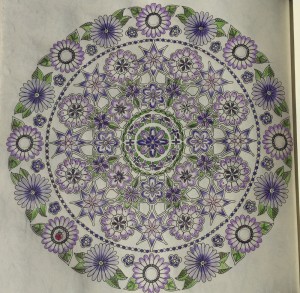 Gaze into the Mona Lisa‘s eyes and try to imagine what she’s thinking. Mentally reassemble the shapes of an abstract work into something concrete. Improvise a scene based on your favorite photograph. Write a poem based on the emotions evoked by the colors in a classic painting. If a picture is worth a thousand words, then challenge yourself to see how many of them you can fit into a story. You never know what ideas may be hidden in a visual work until you look for them!
Gaze into the Mona Lisa‘s eyes and try to imagine what she’s thinking. Mentally reassemble the shapes of an abstract work into something concrete. Improvise a scene based on your favorite photograph. Write a poem based on the emotions evoked by the colors in a classic painting. If a picture is worth a thousand words, then challenge yourself to see how many of them you can fit into a story. You never know what ideas may be hidden in a visual work until you look for them!
Visual art is a beautiful means of expression that can spark all sorts of other wonderful forms of art. Just a brief look is often enough to get our creativity flowing. But what happens when you create visual art yourself?
From Drawings to Words
When I was in high school, I would sometimes find my mind wandering in the middle of class. To pass the time, I would draw the occasional doodle in my textbook. Most of these drawings consisted of wings, dolphins, and horses, with a wolf and a tiger thrown into the mix for good measure. I’ll be the first to admit that they weren’t very good, but those drawings, however distracting they were from schoolwork, actually taught me a few interesting things about myself: I love animals, I love movement, and I wish I could fly. And from then on, I applied all those facts to my writing.
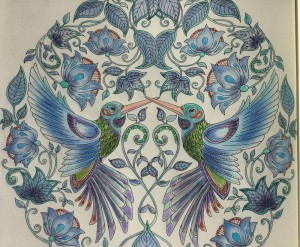 If you were to look back through all the Friday posts on my blog, you’d probably notice that most of my stories feature animals and other non-human characters. I’ve written a poem about what I would do if I had wings, and one of my most popular creative writing posts is about how to write for animal characters. Even a look through my novel ideas would reveal a pattern of bird motifs. Though drawing was never my strong suit, it did give me plenty of ideas for my creative writing, and for that I’ll always appreciate it as one of the many invaluable sources of inspiration for my true artistic passion.
If you were to look back through all the Friday posts on my blog, you’d probably notice that most of my stories feature animals and other non-human characters. I’ve written a poem about what I would do if I had wings, and one of my most popular creative writing posts is about how to write for animal characters. Even a look through my novel ideas would reveal a pattern of bird motifs. Though drawing was never my strong suit, it did give me plenty of ideas for my creative writing, and for that I’ll always appreciate it as one of the many invaluable sources of inspiration for my true artistic passion.
So even if it’s not your forte, I strongly recommend giving visual art a chance. Draw, paint, take photos, anything that can jumpstart the creative part of your mind. The ideas you find in your art may become the inspiration for your next big written work. And if you’re lucky, you may discover something beautiful about yourself along the way. Good luck, and thanks for reading!

Today’s post is dedicated to my grandmother, whose lovely work in Johanna Basford’s Secret Garden coloring book served as the illustrations for this article. Happy Birthday, Grandma! I love you!
by Naomi L. | June 17, 2015 | Blog, Creative Writing, What If? Writing Prompts |
Once again, here’s a fresh round of “What If?” Writing Prompts for you. I realize I haven’t shared any particularly scary prompts since Halloween, so this week’s post features the second set in this segment themed to the horror genre, featuring prompts suggested by members of Writer’s Carnival! What sorts of creepy tales can you spin around these ideas? Enjoy!
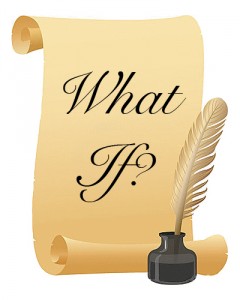 What if… Hannibal Lecter were your neighbor?
What if… Hannibal Lecter were your neighbor?
(Submitted by: Christina, Writer’s Carnival member)
What if… humanity had to adapt to life underground… and drastically changed after thousands of years in the dark?
(Submitted by: Anisa A. Claire, co-founder of Writer’s Carnival)
What if… your cat became smarter and started trying to kill you?
(Submitted by: Tim Hillebrant, Writer’s Carnival staff member)
What if… the second you stepped out of bed, a hand reached out from under it and grabbed your ankle?
What if… you received a package in the mail containing a human head?
Have fun writing your own tales of horror!
If you have any “What If?” writing prompt suggestions (for any theme), please feel free to share them in the comments below. Ideas I like may be featured in future “What If?” posts, with full credit and a link to your blog (if you have one)! Also, if you’ve written a piece based on an idea you’ve found here, be sure to link back to the respective “What If?” post. I would love to see what you’ve done with the prompt! Thank you!
by Naomi L. | June 10, 2015 | Blog, Creative Writing |
Yes, I know it’s been a while since I’ve posted one of these, but I haven’t forgotten about this series! On the topic of art and science, so far I’ve discussed their similarities and differences in reading, writing, and research. Now it’s time to discuss another important part of any type of writing: editing. How do art and science compare when it comes to proofreading your work?
How the Art is like the Science
Editing is an essential part of writing, no less important than the creative part. It’s a practice that every writer must undertake at least at the most basic level. Even if you hand your work off to someone else for proofreading, you still need to be confident in the quality of whatever you’re passing on, and the only one who can make that call is you. Whether you write artistically or scientifically, rewriting is writing, and you can’t expect that writing to go very far unless you give it the care and attention it deserves.
Artists and scientists alike are expected to master the technique of editing. We have to know how to take a step back and review everything we’ve written with a fresh perspective. We must be able to channel our inner writer and our inner critic and learn when to listen to which voice. We have to be able to catch mistakes in a second, third, fourth reading. We need to be able to identify weak points and figure out how to connect all our ideas into one coherent picture. Regardless of our form, style, or content, the ability to edit our own work is indispensable if we wish to be taken seriously in this ever-expanding world of the written word.
At its core, editing is crucial to all forms of writing. The process of editing, however, differs between artistic and scientific writing.
How the Art is unlike the Science
Editing artistic writing is something of a linear process. First, it’s up to the writer to look over their work and make as many changes as they deem appropriate. As the best of us know, this part alone can take weeks, if not months or even years. Once the author is satisfied with their draft, the baton is often passed to an editor, ideally a professional, who provides fresh opinions on how to improve the piece. A back-and-forth between the writer and the editor is encouraged at this stage for the benefit of the work being revised, and some writers choose to include a beta reader or two for additional insight. Novelists who opt for the traditional route also need to wait for their manuscript to be approved by a publishing house, yet another stop on the road to publication. Only when a written work has passed all the checkpoints can it finally reach the public, and while there may be some overlapping along the way, the process as a whole is basically one continuous track.
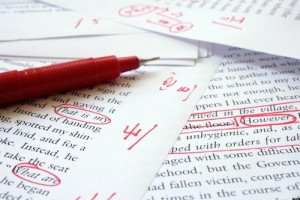 Scientific writing, on the other hand, is revised through a sort of “simultaneous editing”. For example, my first experience writing a research paper involved a collaborative effort among me, my professor, and two other authors. One researcher was responsible for most of the writing, then we each had to review the first draft on our own time and send each other our notes so the lead author could incorporate them all into one updated draft for a second round of reviews. This process was repeated several times until we were all satisfied enough with the final draft to submit it for peer review, at which point it was up to another group of researchers to simultaneously read it over and contribute their opinions. Since an academic paper usually takes more than one writer to put together, it’s much more time efficient to have multiple editors review it at the same time throughout the stages from writing to publication, especially in an age when information is emerging faster than we can keep up with it. In short, multiple reviewers plus simultaneous editing equals faster science.
Scientific writing, on the other hand, is revised through a sort of “simultaneous editing”. For example, my first experience writing a research paper involved a collaborative effort among me, my professor, and two other authors. One researcher was responsible for most of the writing, then we each had to review the first draft on our own time and send each other our notes so the lead author could incorporate them all into one updated draft for a second round of reviews. This process was repeated several times until we were all satisfied enough with the final draft to submit it for peer review, at which point it was up to another group of researchers to simultaneously read it over and contribute their opinions. Since an academic paper usually takes more than one writer to put together, it’s much more time efficient to have multiple editors review it at the same time throughout the stages from writing to publication, especially in an age when information is emerging faster than we can keep up with it. In short, multiple reviewers plus simultaneous editing equals faster science.
The art of editing is learning how to balance the inner writer and the inner critic, while the science of editing is refining your work into a piece worthy of public attention. How to go about it may depend on what exactly you write, but if you can master the technique, you can be sure it’ll bring you one step closer to being on the outside what you already are at heart: a full-fledged writer.
by Naomi L. | June 3, 2015 | Blog, Creative Writing, What If? Writing Prompts |
Time for another set of “What If?” Writing Prompts. Speaking of time, this week’s batch is centered around a fascinating theme yet to be featured in this segment: history! How might true stories have played out differently if certain historical details were changed? Have fun exploring the possibilities!
 What if… most of the greatest leaders in history had been women?
What if… most of the greatest leaders in history had been women?
What if… the Roman Empire had never fallen?
What if… the Church had not been the most powerful entity in the Middle Ages?
What if… the slave trade had never made it to the United States?
What if… the Axis powers had won World War II?
Good luck writing your own twists on history!
If you have any “What If?” writing prompt suggestions (for any theme), please feel free to share them in the comments below. Ideas I like may be featured in future “What If?” posts, with full credit and a link to your blog (if you have one)! Also, if you’ve written a piece based on an idea you’ve found here, be sure to link back to the respective “What If?” post. I would love to see what you’ve done with the prompt! Thank you!
by Naomi L. | May 27, 2015 | Blog, Creative Writing, What If? Writing Prompts |
So it seems my ultra busy grad school schedule is catching up with me yet again, so for now, I’m afraid I’ll have to pad over my creative writing topics with some “What If?” Writing Prompts at least every other week. My apologies for not being able to bring you more fulfilling content for a while, but I hope you’ll find these posts entertaining nonetheless.
Since I enjoyed writing for the Earth Day post so much, I figured I’d try my hand at coming up with another batch of nature-themed prompts. See what sorts of environmental stories you can create based on these ideas! Enjoy!
 What if… the world ran entirely on renewable energy sources?
What if… the world ran entirely on renewable energy sources?
What if… a massive space object were to black out the sun?
What if… there were ecosystems completely uninfluenced by human actions?
What if… species could evolve fast enough to keep up with the accelerated environmental changes caused by people?
What if… humans were an endangered species?
Have fun spinning your own environmental tales!
If you have any “What If?” writing prompt suggestions (for any theme), please feel free to share them in the comments below. Ideas I like may be featured in future “What If?” posts, with full credit and a link to your blog (if you have one)! Also, if you’ve written a piece based on an idea you’ve found here, be sure to link back to the respective “What If?” post. I would love to see what you’ve done with the prompt! Thank you!


 Visual art is arguably the “most universal” art medium. It comes in many forms: drawings, paintings, photography, sculptures, etc. They can come in a
Visual art is arguably the “most universal” art medium. It comes in many forms: drawings, paintings, photography, sculptures, etc. They can come in a  Gaze into the
Gaze into the  If you were to look back through all the Friday posts on my blog, you’d probably notice that most of my stories feature animals and other non-human characters. I’ve written a poem about what I would do if I had wings, and one of my most popular creative writing posts is about how to write for animal characters. Even a look through my novel ideas would reveal a pattern of bird motifs. Though drawing was never my strong suit, it did give me plenty of ideas for my creative writing, and for that I’ll always appreciate it as one of the many invaluable sources of inspiration for my true artistic passion.
If you were to look back through all the Friday posts on my blog, you’d probably notice that most of my stories feature animals and other non-human characters. I’ve written a poem about what I would do if I had wings, and one of my most popular creative writing posts is about how to write for animal characters. Even a look through my novel ideas would reveal a pattern of bird motifs. Though drawing was never my strong suit, it did give me plenty of ideas for my creative writing, and for that I’ll always appreciate it as one of the many invaluable sources of inspiration for my true artistic passion.
 What if… Hannibal Lecter were your neighbor?
What if… Hannibal Lecter were your neighbor?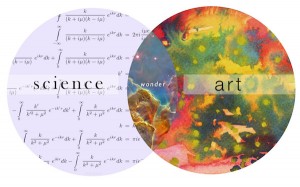
 Scientific writing, on the other hand, is revised through a sort of “simultaneous editing”. For example, my first experience writing a research paper involved a collaborative effort among me, my professor, and two other authors. One researcher was responsible for most of the writing, then we each had to review the first draft on our own time and send each other our notes so the lead author could incorporate them all into one updated draft for a second round of reviews. This process was repeated several times until we were all satisfied enough with the final draft to submit it for peer review, at which point it was up to another group of researchers to simultaneously read it over and contribute their opinions. Since an academic paper usually takes more than one writer to put together, it’s much more time efficient to have multiple editors review it at the same time throughout the stages from writing to publication, especially in an age when information is emerging faster than we can keep up with it. In short, multiple reviewers plus simultaneous editing equals faster science.
Scientific writing, on the other hand, is revised through a sort of “simultaneous editing”. For example, my first experience writing a research paper involved a collaborative effort among me, my professor, and two other authors. One researcher was responsible for most of the writing, then we each had to review the first draft on our own time and send each other our notes so the lead author could incorporate them all into one updated draft for a second round of reviews. This process was repeated several times until we were all satisfied enough with the final draft to submit it for peer review, at which point it was up to another group of researchers to simultaneously read it over and contribute their opinions. Since an academic paper usually takes more than one writer to put together, it’s much more time efficient to have multiple editors review it at the same time throughout the stages from writing to publication, especially in an age when information is emerging faster than we can keep up with it. In short, multiple reviewers plus simultaneous editing equals faster science.
Recent Comments